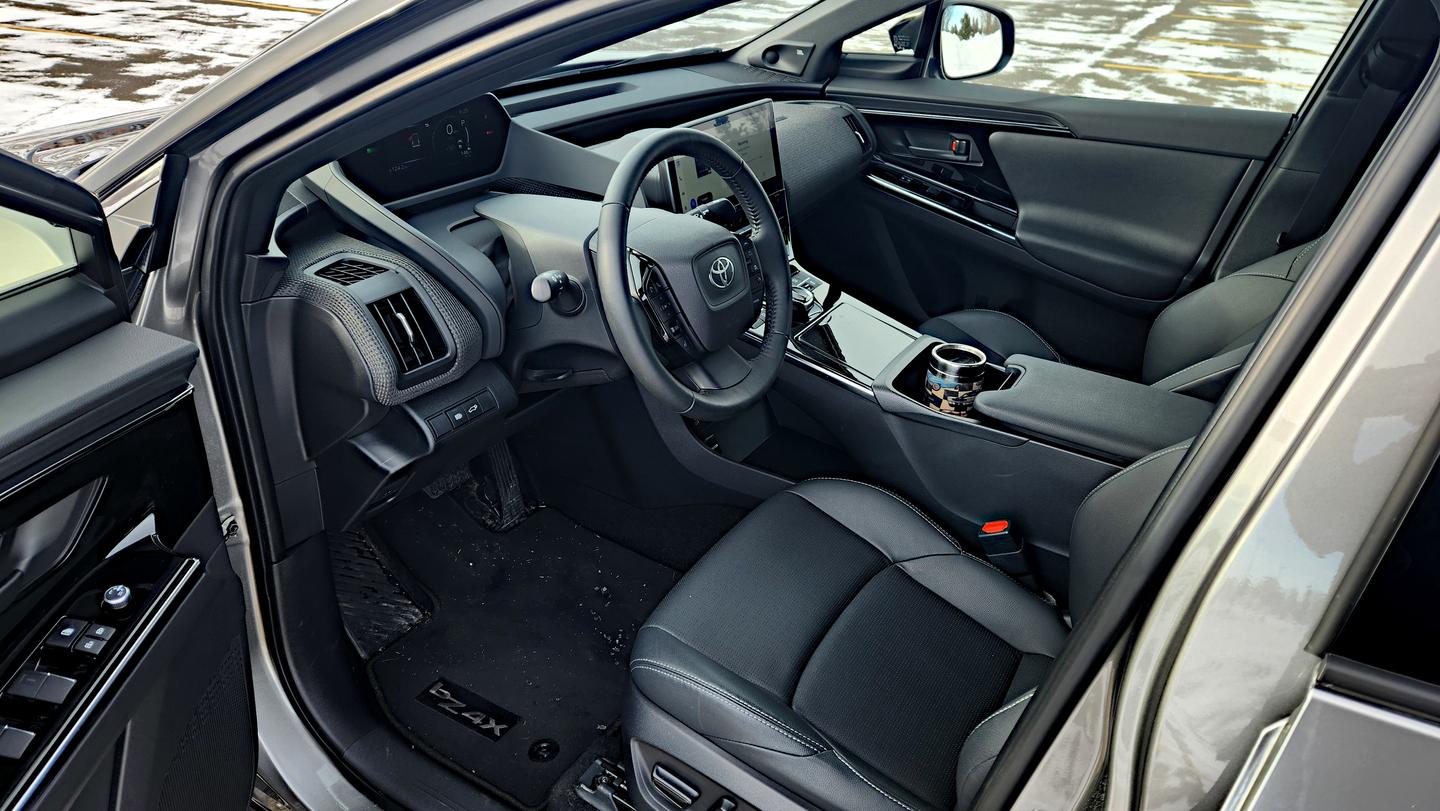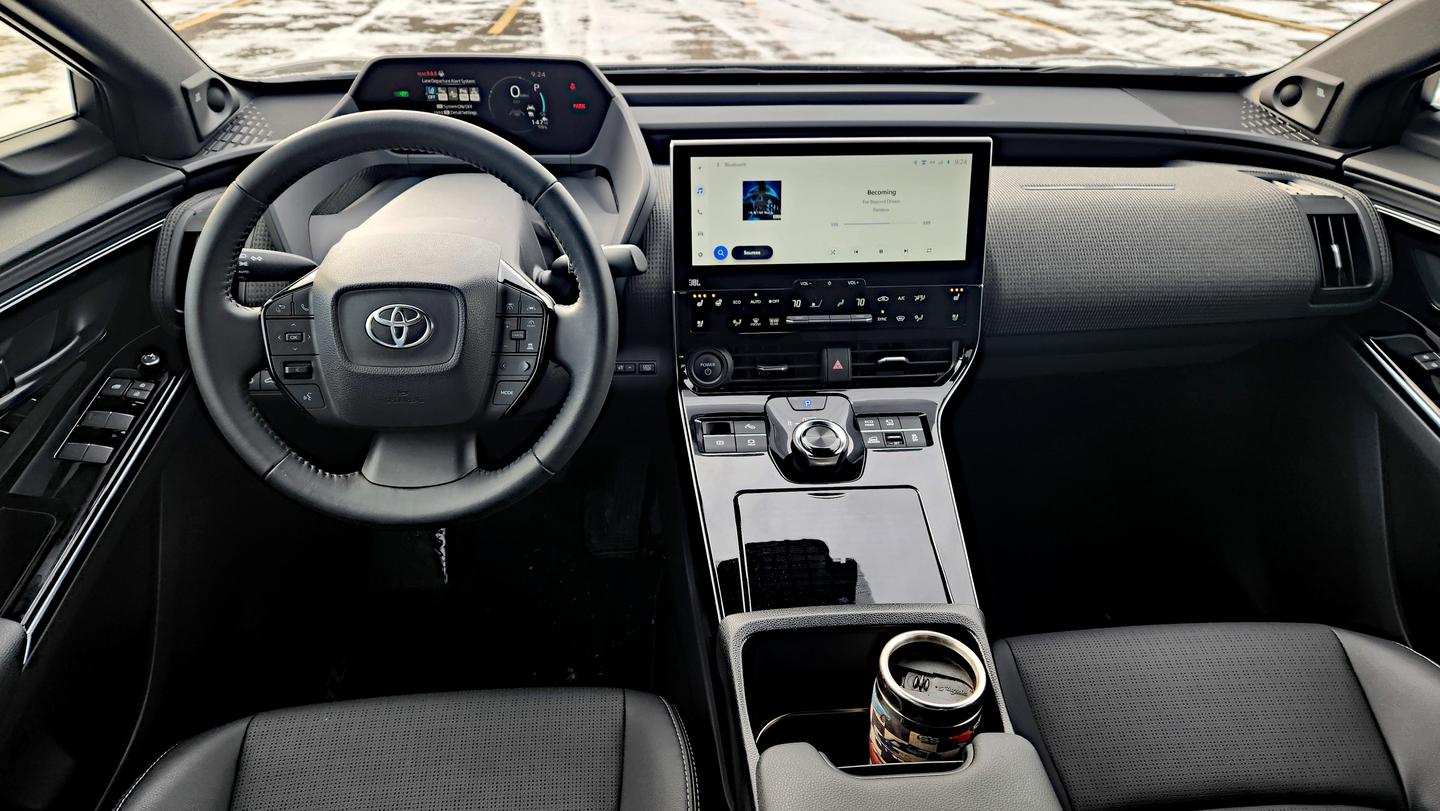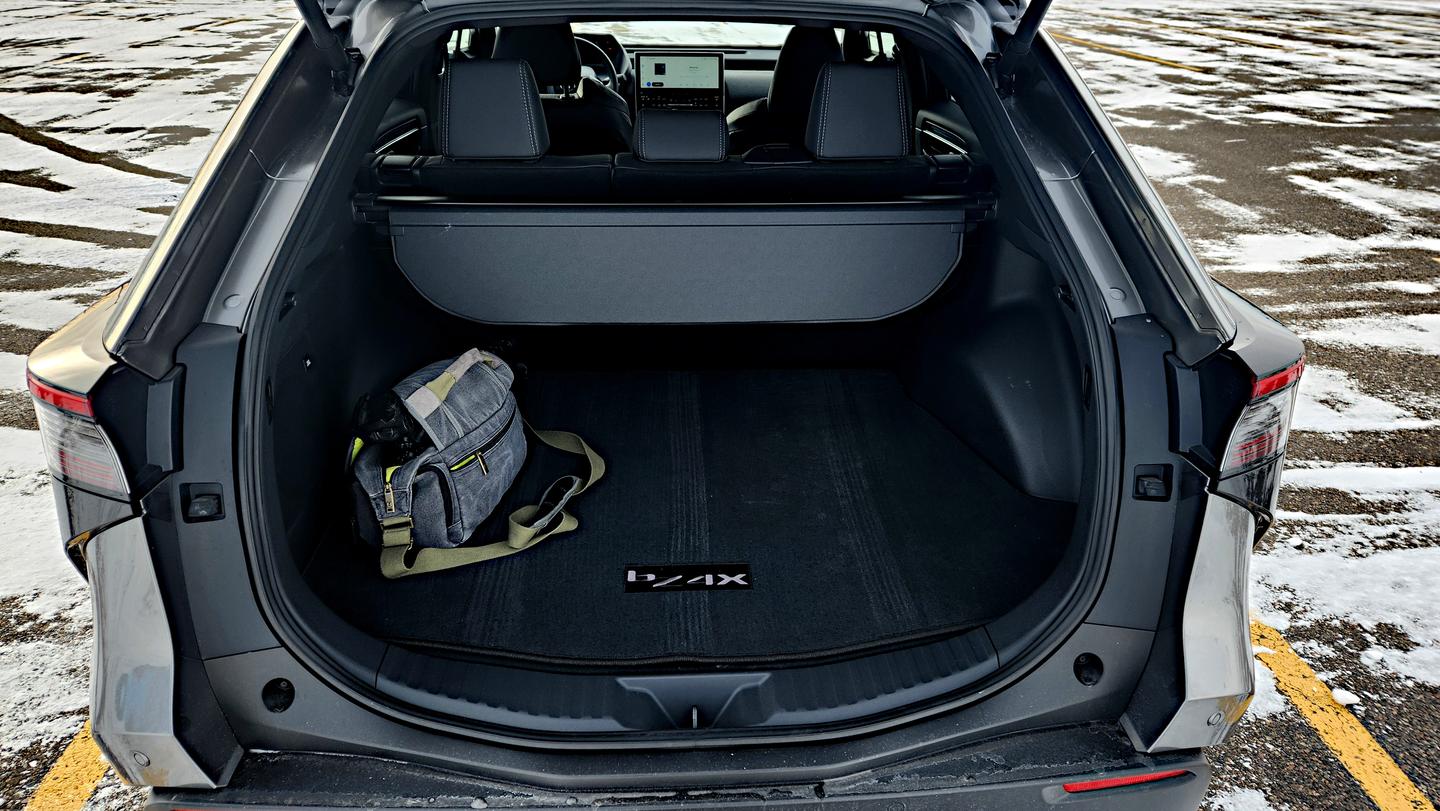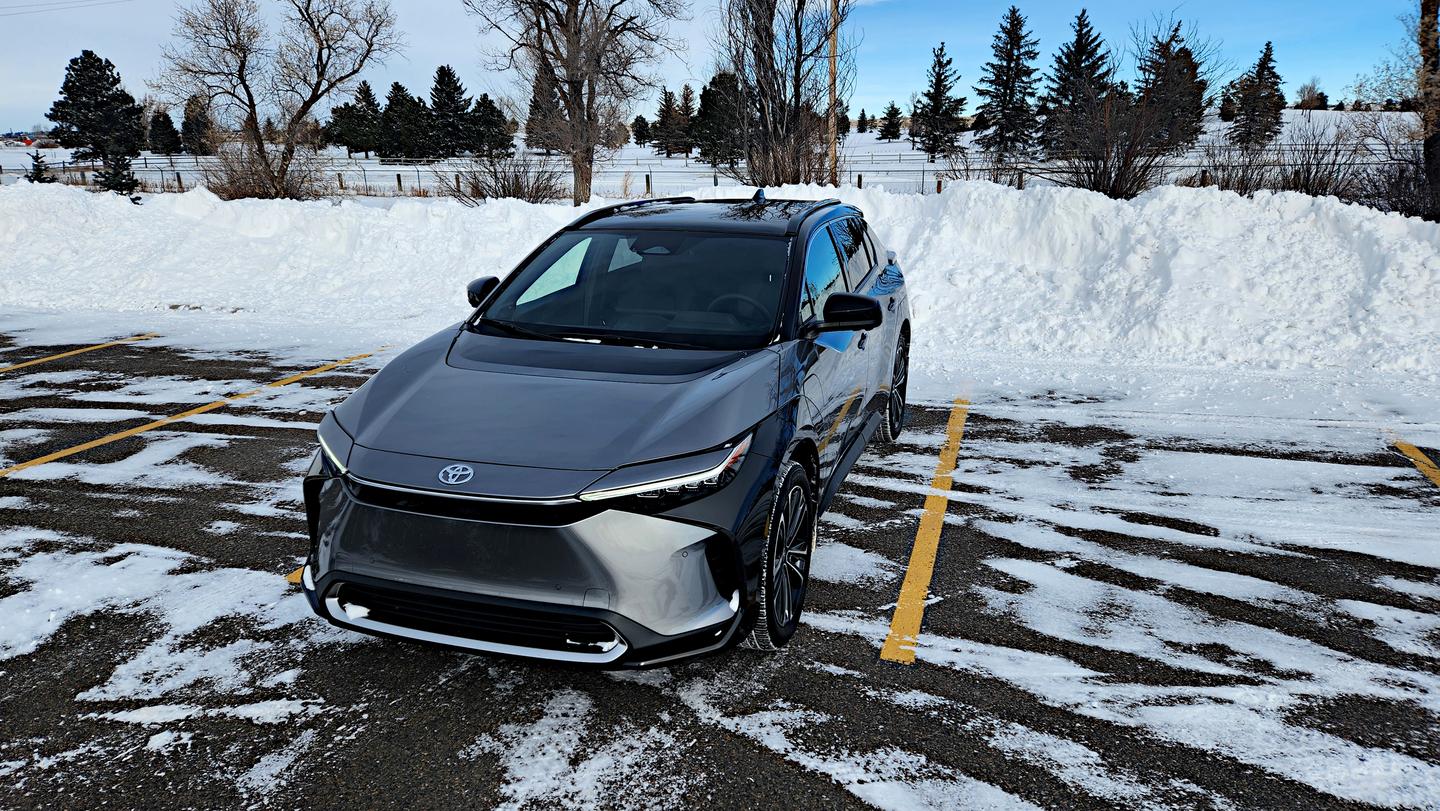As Toyota’s first serious foray into electric vehicles, most of us expected the bZ4X to be … well, something else. Instead, what we got was a confusingly-named station wagon crossover with a puzzling array of capabilities under a tall price tag.
To remember the ridiculous bank-PIN-sounding name of the bZ4X, I have to repeat the word “Buzzforx” in my head. That’s not good marketing.
The Toyota bZ4X is sized similarly to the Venza crossover wagon, has a range barely on par with the much cheaper Nissan LEAF, and an interior that makes the Prius look pretty plush.
The bZ4X’s price tag starts at about US$43,000. But every time I got into the vehicle, it felt more like $30,000. The interior isn’t cheap, but it’s not luxurious either. Not even really premium. Just nice, which is what most lower-priced vehicles feel like now. This fact leaves us wondering where the extra money went on this one.
Even worse was the quality assurance and public relations disaster that the first few months of the bZ4X’s public sales sank into. Toyota, already having a reputation for being reluctant to jump into battery-electric vehicles, suddenly found decidedly non-EV problems happening to this car. Wheels were jettisoning off the bZ4X like it was some kind of bad garage build at the local “Anything Goes” race event. The long wait to find a fix didn’t help.

Aaron Turpen / New Atlas
The recall also involved the Subaru Solterra, but by comparison the Solterra had sold almost no units up to the point of recall, and Subaru hadn’t really gotten serious with advertising for the car yet. So, headlines read Toyota instead of Subaru. Had the recall been on any other model in Toyota’s lineup, headlines would have been non-existent. But the problem was with Toyota’s new (and only) EV. This came right after Akiyo Toyoda had said that EVs were not, in fact, the full future of automotive in the near term. Not a great combination.
The Subaru Solterra, for those wondering, is the bZ4X’s near-twin in a collaborative agreement similar to the popular BRZ and FT86 sports cars. Not only did Subaru have the good sense to give a real name to their version of this EV, but they also packaged it as a, uhh, Subaru.
Toyota buyers run the gamut from practical everyday A-to-B drivers to extreme off-road “Spell everything with an X while pounding Monsters” types. Subaru buyers are a target niche: Birkenstock sandals, a kayak on the roof, a dog in the back seat, and all-wheel drive are basically it. Except for WRX and STi buyers, who firmly fall into the Monster-pounding category as a sideshow to Subaru’s norm.

Aaron Turpen / New Atlas
It’s clear that in the Subaru lineup, the Solterra is meant to fit in a slot with higher-rent Outback buyers and their need to go all-electric. In practical terms, the Solterra is a slightly smaller Outback with a battery-electric drivetrain.
With Toyota, things are less clear. The bZ4X is roughly the same size and has similar capabilities to the Venza crossover. The Venza hits a small market that needs the capabilities of a RAV4, but which prefers to have more interior room and less boxiness to the design.
That buyer, however, is not necessarily interested in an EV. This is especially true if one looks at the low take rate that the RAV4 Prime plug-in hybrid has. Interest is just not really there, particularly at the high sticker price that’s required to get that electrification. The Venza’s price tag starts at about $8,000 less than the bZ4X’s, and the vehicle comes just as well-equipped and with a hybrid powertrain as standard. Eight grand to get nothing more than an electric drivetrain whose range is not terribly impressive isn’t much of a bargain.

Aaron Turpen / New Atlas
The Toyota bZ4X has an EPA-estimated range of 242 miles (389 km) in its front-wheel drive model and 222 miles (357 km) in its all-wheel drive configuration. My real-world driving of the AWD model placed it well under 200 miles per charge. I averaged about 30% under EPA estimates overall.
A close comparison to the bZ4X is the Kia EV6, which is similar in size and capability. When I tested that vehicle, which boasted a range of 274 miles (441 km) per charge with AWD, it returned about 255 miles of total range. Better than the Toyota by far, and with a price tag that’s very similar. And with a better warranty and interior experience.

Aaron Turpen / New Atlas
The point is that the Toyota bZ4X seems to be missing things at every level. It has a memory-slipping name, it doesn’t seem to really have a home in the Toyota lineup, and it costs the same or more while delivering less than its closest rivals. It’s confusing, to say the least, especially given Toyota’s ability to hit the mark in almost every segment it drops a vehicle into.
Product page: Toyota bZ4X
Source of Article